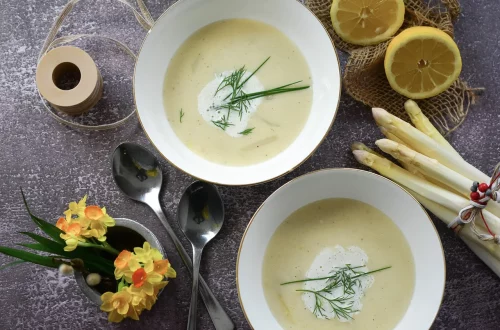
Can Terrapins Eat Grapes Safely and Healthily?
Turtles and terrapins are fascinating creatures that have captured the hearts of many pet owners and nature enthusiasts alike. These reptiles, often found in various aquatic and semi-aquatic environments, are known for their unique adaptations and characteristics. As with any pet, providing a balanced diet is crucial for their health and well-being. One of the most common questions among terrapin caregivers revolves around their dietary options, particularly regarding fruits and vegetables. Grapes, a popular snack for humans, often come into question for their suitability for these reptiles.
The dietary habits of terrapins can vary significantly based on their species and natural habitat. While some may thrive on a diet primarily composed of aquatic plants, others might require a more omnivorous approach that includes protein sources. Understanding what terrapins can and cannot eat is essential for ensuring their longevity and overall health. This brings us to the discussion surrounding grapes, a fruit that is not only sweet and appealing but also rich in vitamins and antioxidants.
However, before introducing any new food into a terrapin’s diet, it is crucial to consider potential risks and benefits. Grapes contain natural sugars and hydration properties, but they also present certain concerns that pet owners should be aware of. As we delve deeper into this topic, we will explore the nutritional aspects of grapes, the implications of including them in a terrapin’s diet, and the best practices for feeding fruits to these unique reptiles.
Nutritional Benefits of Grapes for Terrapins
Grapes are often praised for their nutritional value. They are rich in vitamins C and K, both of which play essential roles in maintaining overall health. Vitamin C is an antioxidant that helps combat oxidative stress, while vitamin K is crucial for blood clotting and bone health. These vitamins can be beneficial to terrapins, supporting their immune systems and promoting healthy growth.
Additionally, grapes contain a good amount of water, making them a hydrating snack option. For terrapins, especially those kept in environments where water intake may be limited, the moisture content in grapes can help supplement their hydration needs. Furthermore, the natural sugars found in grapes can provide a quick source of energy, which might be particularly useful for active reptiles.
However, while the nutritional benefits are appealing, moderation is key. Grapes should never be the main component of a terrapin’s diet. Instead, they should be considered an occasional treat rather than a staple. Overindulgence in sugary fruits can lead to health issues, including obesity and digestive problems. Therefore, it is essential for terrapin owners to understand how to incorporate grapes into a balanced diet without compromising their pet’s health.
Potential Risks of Feeding Grapes to Terrapins
Despite their numerous benefits, grapes also come with potential risks that terrapin owners must consider. One of the primary concerns is the high sugar content in grapes. While natural sugars can provide energy, excessive sugar intake can lead to obesity and related health issues in terrapins. Obesity can significantly shorten a terrapin’s lifespan and lead to other complications, such as shell deformities and metabolic disorders.
Another concern is the possibility of digestive upset. Some terrapins may have sensitive digestive systems that do not handle certain fruits well. Introducing grapes too quickly or in large quantities can lead to diarrhea or other gastrointestinal issues. It is essential to monitor how your terrapin reacts after consuming grapes and to consult with a veterinarian if any adverse effects occur.
Moreover, grapes can pose a choking hazard, especially for smaller terrapin species. If a terrapin does not chew its food properly, it could lead to blockages or other serious health issues. To minimize this risk, it is advisable to cut grapes into smaller, manageable pieces before offering them to your terrapin.
Finally, some terrapins may be allergic to certain fruits, including grapes. Signs of allergic reactions can range from mild to severe, including swelling, lethargy, or even respiratory issues. If you notice any unusual behavior after introducing grapes, it is essential to remove them from your pet’s diet and seek veterinary advice.
How to Safely Introduce Grapes into a Terrapin’s Diet
If you’re considering adding grapes to your terrapin’s diet, it is crucial to do so gradually and safely. Start by offering a small piece of grape to see how your terrapin responds. This approach allows you to monitor for any potential allergic reactions or digestive issues without overwhelming your pet’s system.
Before offering grapes, ensure that they are thoroughly washed to remove any pesticides or chemicals that could be harmful to your terrapin. Organic grapes are a better option if available, as they are less likely to contain harmful residues. After washing, cut the grapes into small, bite-sized pieces to reduce the risk of choking and make it easier for your terrapin to consume.
When introducing grapes, it is essential to do so as part of a balanced diet. Grapes should complement other food items, such as leafy greens, aquatic plants, and protein sources like insects or commercial turtle food. A varied diet ensures that your terrapin receives all the necessary nutrients for optimal health.
Additionally, consider the frequency of feeding grapes. Offering grapes as an occasional treat, perhaps once a week, is a good rule of thumb. This approach allows your terrapin to enjoy the taste of grapes without the risks associated with overconsumption.
Finally, observe your terrapin’s behavior and health after introducing grapes. If you notice any signs of distress or changes in appetite, consult with a veterinarian to rule out any underlying issues.
Conclusion: Grapes as a Treat, Not a Staple
In conclusion, grapes can be a safe and enjoyable treat for terrapins when introduced correctly and in moderation. Their nutritional benefits, including hydration and vitamins, can be advantageous for your pet, but the potential risks must not be overlooked. Owners should prioritize a balanced diet that includes a variety of food sources to ensure the health and longevity of their terrapins.
Always remember to introduce new foods gradually, observe your terrapin’s reaction, and consult with a veterinarian if you have any concerns. By following these guidelines, you can safely incorporate grapes into your terrapin’s diet, enhancing their overall health and happiness.
**Disclaimer:** This article is intended for informational purposes only and does not constitute medical advice. For any health-related concerns regarding your terrapin, please consult a qualified veterinarian.




